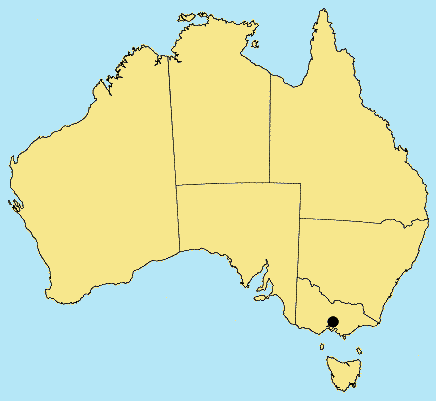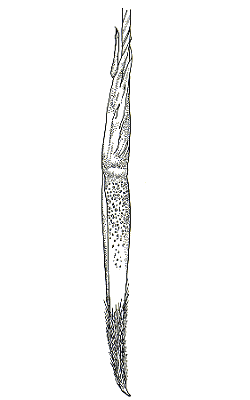Nassella charruana* (Arech.) M.E. Barkworth. Taxon 39: 609 (1990).
Classification. (GPWG 2001) : Subfamily Pooideae. Tribe Stipeae.
Basionym and/or Replacement Name: Stipa charruana Arechav., Anales Mus. Nac. Buenos Aires 4: 181, f. 3 (1895).
Type of Basionym or Protologue Information: IT: J. Arechavaleta s.n., Oct, Uruguay: Montevideo (US-993455).
Key references (books and floras): [2002] D.Sharp & B.K.Simon, AusGrass, Grasses of Australia, [2009] A.Wilson (ed.). Flora of Australia, Vol 44A. Poaceae 2 (65).
Illustrations: [2009]. A.Wilson (ed.), Flora of Australia 44A: Poaceae 2 (63, Fig 9).
Habit. Perennial. Rhizomes present, short. Culms erect, 25–100 cm tall. Leaf-sheaths glabrous on surface. Ligule an eciliate membrane, 0.8–2 mm long, obtuse. Leaf-blades flat or conduplicate or convolute, 5–20 cm long, 0.5–2 mm wide.
Inflorescence. Inflorescence compound, a panicle. Panicle oblong, effuse, 6–30 cm long.
Spikelets. Spikelets pedicelled. Fertile spikelets 1-flowered, comprising 1 fertile floret(s), without rachilla extension, lanceolate, terete, 16–20 mm long.
Glumes. Glumes similar, thinner than fertile lemma. Lower glume linear, hyaline, without keels, 3 -nerved. Upper glume lanceolate, 12–17 mm long, hyaline, without keels, 3 -nerved.
Florets. Fertile lemma 8–10.5 mm long, without keel, 5 -nerved. Lemma apex awned, 1 -awned. Median (principal) awn 45–80 mm long overall, with a twisted column. Column 20–25 mm long. Palea 2 -nerved, without keels. Lodicules present. Anthers 3. Grain 3.5 mm long.
Continental Distribution: South America.
Australian Distribution: Victoria.
Victoria: Volcanic Plain.
Notes. This species has only recently been found to occur in Australia.



